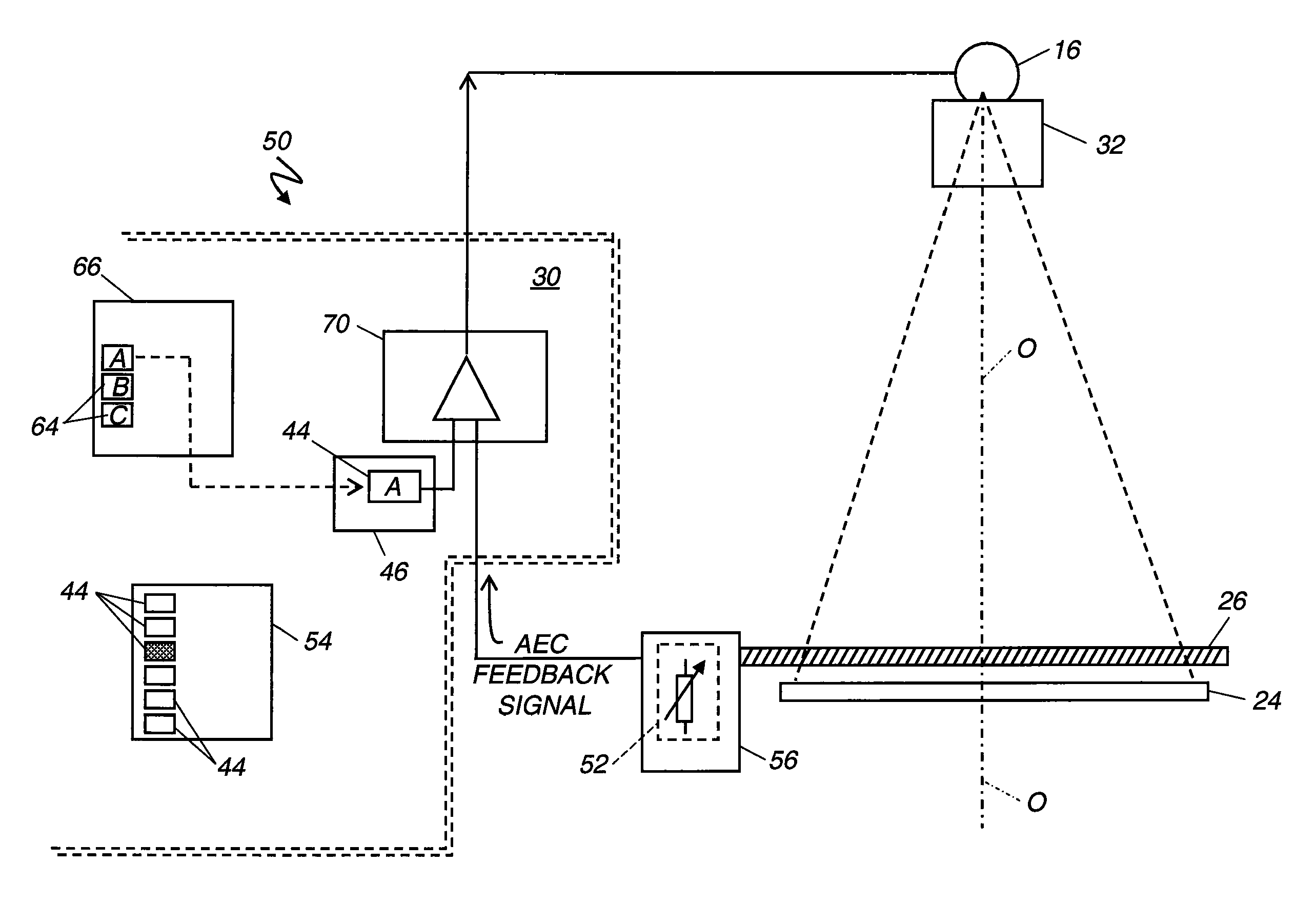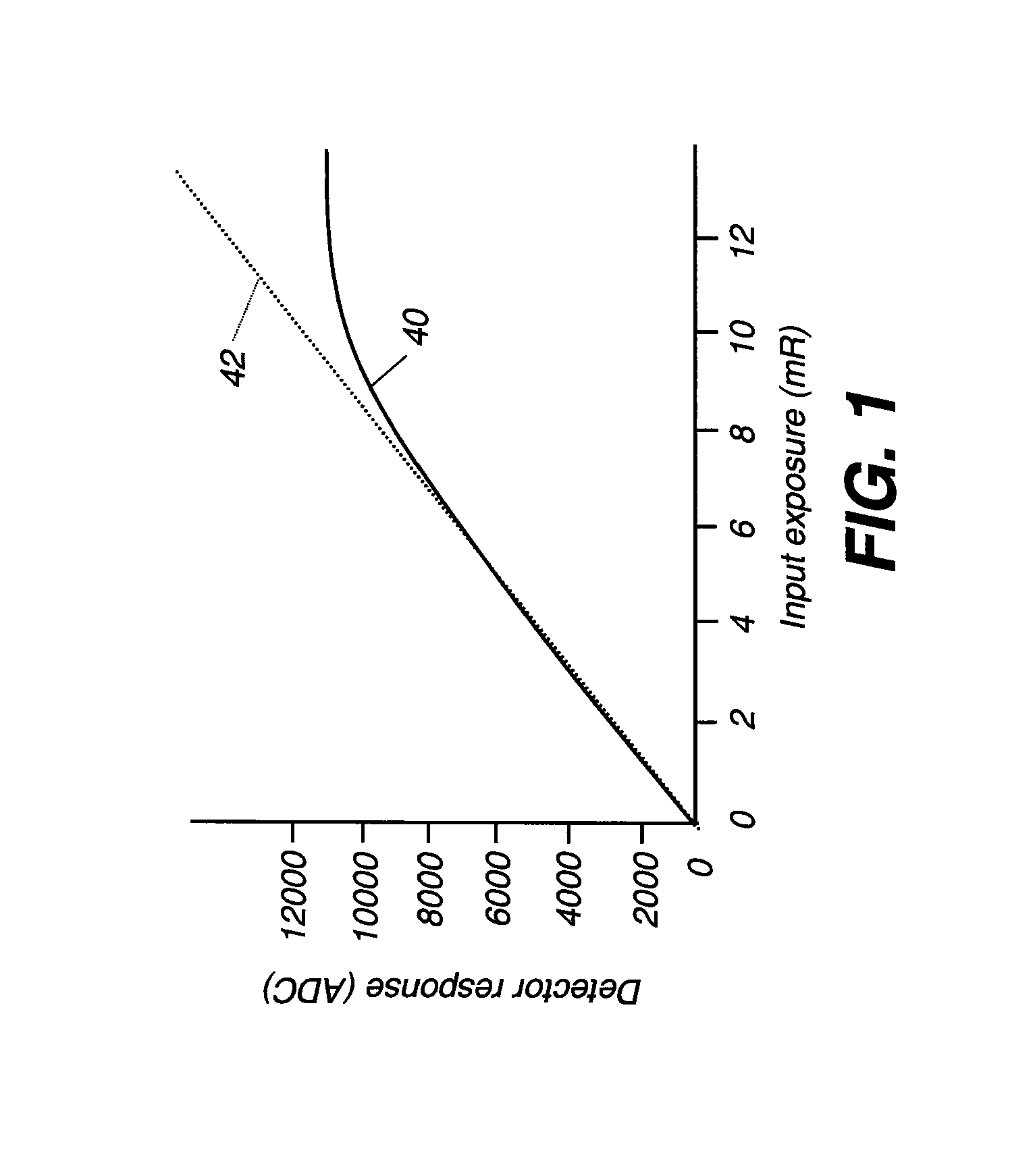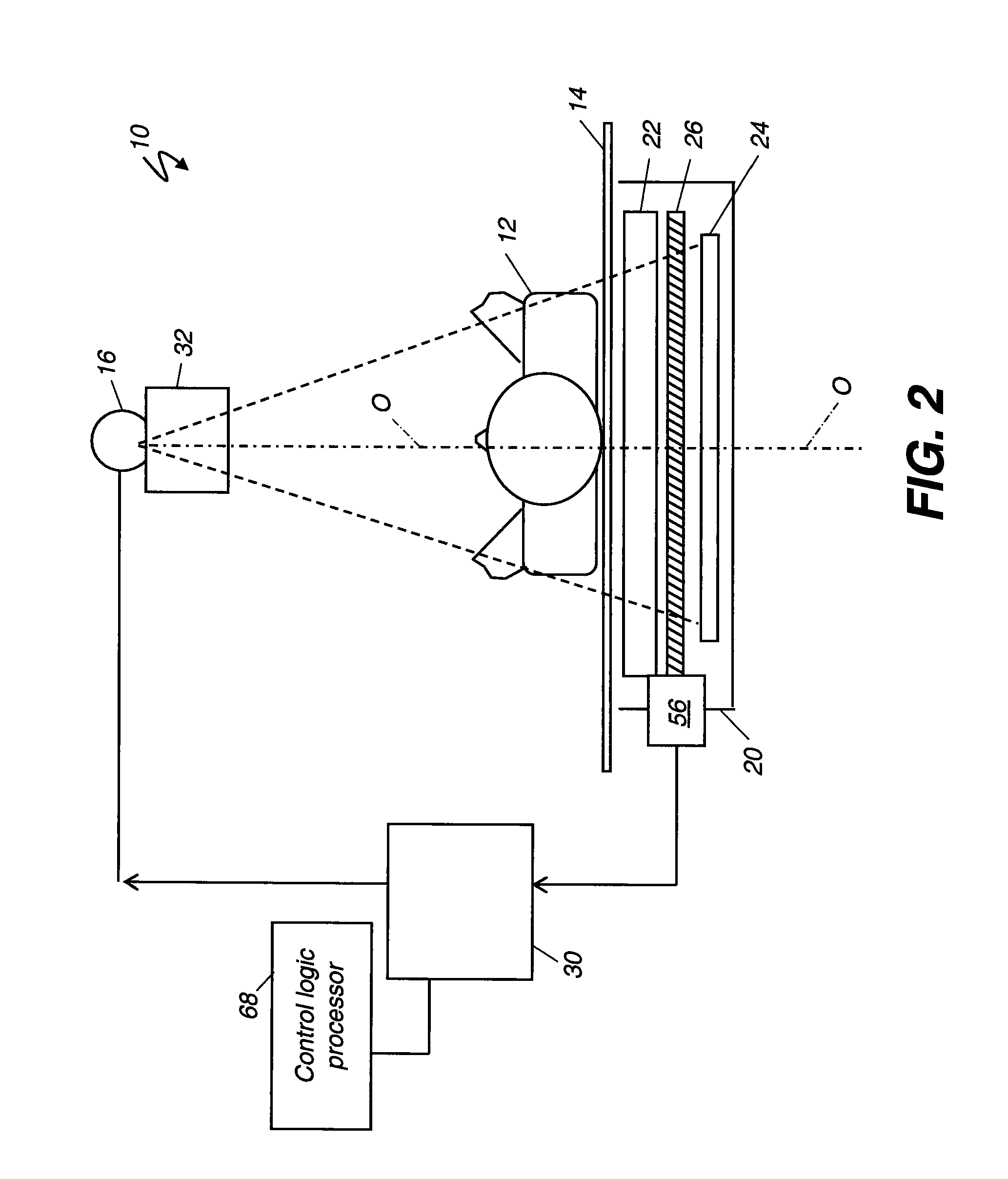Digital detector calibration with known exposure
a digital detector and exposure technology, applied in the field of xray imaging, can solve the problems of the complexity of the calibration process, and the inability to accurately predict the exposure range of linear extrapolation, so as to achieve the effect of improving accuracy
- Summary
- Abstract
- Description
- Claims
- Application Information
AI Technical Summary
Benefits of technology
Problems solved by technology
Method used
Image
Examples
Embodiment Construction
[0024]The present description is directed in particular to elements forming part of, or cooperating more directly with, apparatus in accordance with the invention. It is to be understood that elements not specifically shown or described may take various forms well known to those skilled in the art.
[0025]In the context of the present disclosure, the term “radiation beam conditions” relates to the parameters used for generation of the X-ray radiation and forms a set of conditions that includes at least one or more of the following parameters:
[0026](i) A kVp value indicative of beam energy;
[0027](ii) An mA value indicative of beam intensity;
[0028](iii) One or more X-ray filter materials;
[0029](iv) A source-to-image distance (SID) between the radiation emitter and the digital X-ray detector.
[0030]Embodiments of the present invention address the problem of DR detector calibration by employing a radiation sensor, such as that provided by Automatic Exposure Control (AEC) components of the ...
PUM
 Login to View More
Login to View More Abstract
Description
Claims
Application Information
 Login to View More
Login to View More - R&D
- Intellectual Property
- Life Sciences
- Materials
- Tech Scout
- Unparalleled Data Quality
- Higher Quality Content
- 60% Fewer Hallucinations
Browse by: Latest US Patents, China's latest patents, Technical Efficacy Thesaurus, Application Domain, Technology Topic, Popular Technical Reports.
© 2025 PatSnap. All rights reserved.Legal|Privacy policy|Modern Slavery Act Transparency Statement|Sitemap|About US| Contact US: help@patsnap.com



